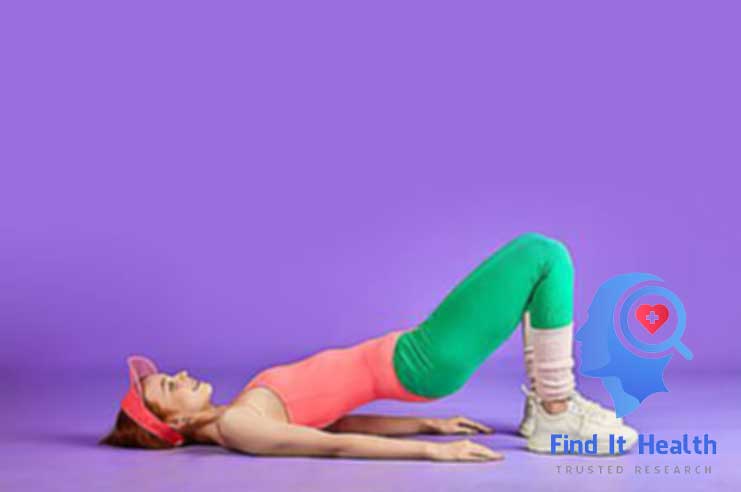How to Measure Core Stability: Summarizing Abdominal Strength Tests
- 2023-12-12
The best way to measure core stability is to use a scientific research method.
Our research (National Strength & Conditioning Association, 2005) describes core stability tests; with the kneeling arm raise as one of the most reliable methods of testing trunk stability.
In this article, we summarize successful scientific methods of core stability tests and even lay out the shortened processes for you or your team.

Table of Contents
Sahrmann Core Stability Test: A Summary

The Sahrmann stability test is a 5 step process measuring the ability of the core muscles (abdominals) to stabilize the spine. The 5 progressive levels of the core stability test are as follows:
- Slowly raise one leg to a 90-degree hip flexion with 90-degree knee flexion. Attempt to bring the opposite leg to the same position.
- From the previous Level 1 position, slowly lower one leg so that the heel contacts the ground. Slide-out that leg to fully extend the knee.
- From the end of position level 1, slowly lower one leg so that the heel is 12 cm above the ground. Then slide that leg out to a full knee extension.
- From the end of position level 1, slowly lower BOTH legs together so that the heels touch the ground. Then slide out both legs for a full knee extension.
- From the end of position level 1, slowly lower both legs at the same time so that the heels are 12 cm above the ground. Then slide both legs out for full knee extensions.
These core stability exercises are an accurate way of testing muscle activity scientifically. The described 4 level exercises need to be produced with EMG signals generated from wireless surface electrodes attached to muscle fibers on the sides of the athlete’s body. If you are looking for more of our in-depth research, we have a popular review of TENS EMS units.
Functional Core Strength Testing

The trunk stability test and unilateral hip bridge endurance tests are key components of functional core strength testing due to their repeatability with many types of athletes and non-athletes.
For the best core strength testing physical therapy provides, the trunk stability test is a clinically proven valid and reliable lab test. The legs are strapped together with the athlete’s feet on the footplate that eliminates control of the chair through the lower extremities. Data is collected in a number of ways but can be summarized by the time elapsed or ab fatigue.
For unilateral hip bridges, a core assessment test starts with an athlete maintaining a neutral pelvis in both transverse and sagittal planes for as long as they can with one leg on the ground and one leg fully extended in the air.
To answer why is core strength important; I must describe the reasons why core stability muscles are so vital. The middle trunk of our body uses those core stabilizer muscles in order to move around with the ease that humans do. The core connects our back muscles to our legs, allowing us to exercise or even sit down in a chair in a coordinated fashion. In simpler terms, the stability of the abs is a keystone for optimal athletic performance and injury prevention.
If you are interested in checking out more of our articles, we have an ultimate guide on pulse oximeters that is very popular with our regular readers. Enjoy!
Trunk Stability Exercises

Core stability tests are modeled on core stabilization workouts for training and rehabilitation. One test involves specific exercises, one of which being the trunk stability push-up.
The trunk stability push up test is completed as follows:
- Get in push-up position with the hands shoulder-width apart in line with the head and the legs together with the toes on the ground.
- Stiffen the body and extend the elbows, lifting the body away from the floor in a single motion.
- Repeat steps 1 and 2 as needed.
This trunk stability exercise is used to measure trunk stability and assess the possibility of push-up rehabilitation training. The athlete or rehabilitation patient’s goal is to push up from the ground while tightening their core as much as possible.
FindItHealth.net Frequently Asked Questions
How do you test core strength?
Core strength is tested with either the Sahrmann stability test, the trunk stability test, or the unilateral hip bridge endurance tests. They all do an excellent job of assessing a good starting point for an abs exercise program.
What is functional strength testing?
After a few weeks of testing, you will be able to progress in your core strength exercises. The tests simply allow you to see how you have improved in your core strength.
How do you test core strength and stability?
Functional strength testing is completed by using the Sahrmann stability test and the trunk stability test as the keystones of keeping your core stability exercises working to your advantage. In the above article, we even cover push-ups for core stability.
This is accomplished by stiffening your body and then keeping your arms at shoulder length apart gripping the ground. You will push and keep your body up for as long as possible in order to test for core strength and stability.
What is functional core strength?
Functional core strength is the ability to develop strong abs and excellent core strength. The function of moving around and being athletic is the benefit of having above-average functional core strength because your core stability muscles are stronger and more able to accomplish more tensile and high-pressure activities.
How do you do a trunk stability pushup?
- Get in a push-up position with your hands shoulder-width apart in line with the head and the legs together.
- Extend the elbows, lifting the body away from the floor in a single motion.
- Repeat steps 1 and 2 as needed.
- Recording muscle activity data may be important in the type of study you wish to accomplish.
What does trunk stability mean?
Trunk stability comes from the 1990s study by Hodges and Richardson; meaning that your ability to have total control of your spinal column during the desired movements you wish to control. Strength exercises include the development and equilibrium of the rectus abdomens, internal oblique, external oblique, and transversus abdominis.
How do you measure core stability?
Core stability is measured through functional core strength tests. For instance, the trunk stability test is followed by positioning your abdomen in a certain way.
For excellent advice about the core strength testing physical therapy provides, the trunk stability test should be followed. First, the legs are strapped together with the person’s feet on the footplate which then removes control of the chair through any leg movements which would invalidate the data.
Conclusion: Research by findithealth.com

The external oblique, internal oblique, and transverse abdominal are the layers that extend between the vertebral column. In normal health community terms, it means the abdominal muscle group. We’ve covered the various tests that involve the different types of core stability exercises in a way that we hope will give you relevant health information that will keep you happy and healthy.
Our small health community needs high-quality information that is easily shareable and actionable so that we can help our society be more comfortable and able to thrive in whatever situation they find themselves in.
Our goal is to provide relevant health information, helping you with testing for core strength and the best recliners. If you enjoy our content, please feel free to share it with your friends and family. Thank you for reading!
References
Hong Kong Physiotherapy Journal. (2020). Abdominal muscle activation: An EMG study of the Sahrmann five-level core stability test.
Wikipedia contributors. (2021). Abdomen. In Wikipedia, The Free Encyclopedia.
Wikipedia contributors. (2021). Abdominal exercise. In Wikipedia, The Free Encyclopedia.


I think this is one of the most vital informational articles for me.
And I’m glad to read your article, but would like to remark on some general things, the website style is perfect, the articles are really nice.
D. Good job, cheers